
THE GREAT ENGINEERS OF MEDIEVAL INDIA were mainly Shudras. Members of the lowest varna in the caste hierarchy, the Shudras produced a steady supply of architects, builders, stonemasons, bronze sculptors, goldsmiths and other professionals. Sometimes called the Vishwakarma community, these artisans and craftsmen worked in hereditary guilds. They studied structural design, mathematics, material science and the artistic conventions of the day. Commissioned by kings, merchants and Brahmins—who disdained all manual labour themselves—the Shudras, aided by the labour of those considered “untouchable” and outside the varna hierarchy, built all of India’s engineering marvels, including its grand temple towns, magnificent cities such as Vijayanagar and medieval fort-palaces.
Take for instance the town of Khajuraho a thousand years ago, where Shudra artisans, in large workshops, conceived and carved their artwork and taught apprentices amid the sounds of hammers and chisels. Inscriptions show that with rising proficiency, artisans gained new titles. A skilled artisan was called Silpin, who sometimes inscribed his name on his creations, including on panels of erotic art with playful moods and delicate emotions. With higher skill, he became a Vijananin. A few became adept enough to be called Vaidagdhi Visvakarman, masters who went beyond mere technicalities of craft to conceiving large architectural projects and the finer aesthetics of art, winning much respect, social status and economic rewards. The Shudra domination of the engineering profession in India continued well into the colonial era.
This story is from the August 2020 edition of The Caravan.
Start your 7-day Magzter GOLD free trial to access thousands of curated premium stories, and 8,500+ magazines and newspapers.
Already a subscriber ? Sign In
This story is from the August 2020 edition of The Caravan.
Start your 7-day Magzter GOLD free trial to access thousands of curated premium stories, and 8,500+ magazines and newspapers.
Already a subscriber? Sign In
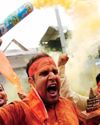
Mob Mentality
How the Modi government fuels a dangerous vigilantism
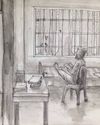
RIP TIDES
Shahidul Alam’s exploration of Bangladeshi photography and activism

Trickle-down Effect
Nepal–India tensions have advanced from the diplomatic level to the public sphere
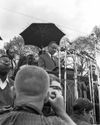
Editor's Pick
ON 23 SEPTEMBER 1950, the diplomat Ralph Bunche, seen here addressing the 1965 Selma to Montgomery March, was awarded the Nobel Peace Prize. The first black Nobel laureate, Bunche was awarded the prize for his efforts in ending the 1948 Arab–Israeli War.

Shades of The Grey
A Pune bakery rejects the rigid binaries of everyday life / Gender
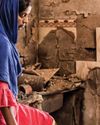
Scorched Hearths
A photographer-nurse recalls the Delhi violence
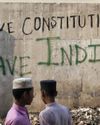
Licence to Kill
A photojournalist’s account of documenting the Delhi violence
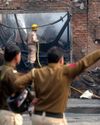
CRIME AND PREJUDICE
The BJP and Delhi Police’s hand in the Delhi violence

Bled Dry
How India exploits health workers

Status Update
India’s telling silence on the Hagia Sophia controversy